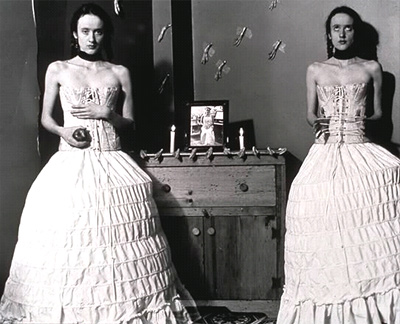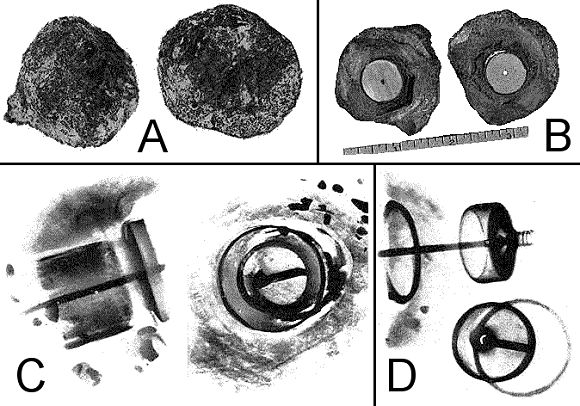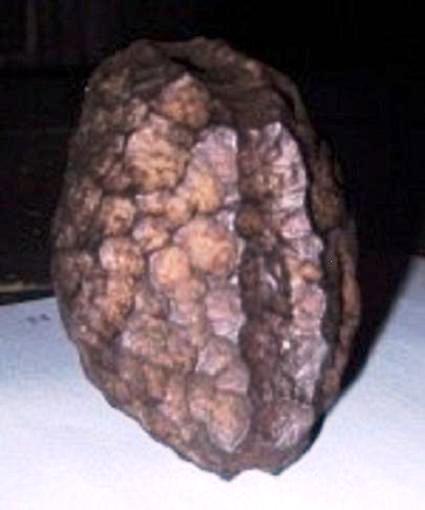
Although scrying is most commonly done with a crystal ball, it may also be performed using any smooth surface, such as a bowl of liquid, a pond, or a crystal.
Scrying is actively used by many cultures and belief systems and is not limited to one tradition or ideology. As of 2009[update], Ganzfeld experiments, a sensory deprivation experiment inspired by scrying, provides the best known experimental setting for detecting psi abilities in the laboratory. Like other aspects of divination and parapsychology, scrying is not supported by mainstream science as a method of predicting the future or otherwise seeing events that are not physically observable.
Method
The visions that scryers say they see may come from variations in the medium. If the medium is water (hydromancy), then the visions may come from the color, ebb and flow, or ripples produced by pebbles dropped in a pool. If the medium is a crystal ball, the visions may come from the tiny inclusions, web-like faults, or the cloudy glow within the ball under low light (e.g., candlelight).
One method of scrying using a crystal ball involves a self-induced trance. Initially, the medium serves as a focus for the attention, removing unwanted thoughts from the mind in the same way as a mantra. Once this stage is achieved, the scryer begins a free association with the perceived images suggested. The technique of deliberately looking for and declaring these initial images aloud, however trivial or irrelevant they may seem to the conscious mind, is done with the intent of deepening the trance state, in this trance the scryer hears his own disassociated voice affirming what is seen within the concentrated state in a kind of feedback loop. This process culminates in the achievement of a final and desired end stage in which rich visual images and dramatic stories seem to be projected within the medium itself, or directly within the mind's eye of the scryer, something like an inner movie. This process reputedly allows the scryer to "see" relevant events or images within the chosen medium.
One of the most famous scryers in history, lived in the 16th century and was known as Nostradamus. He used a bowl of water or a "magic mirror" to "see" the future in it, while he was in trance.
Mysteries of Scrying

The word also is used to describe the sensation of having glimpsed oneself in peripheral vision, in a position where there is no chance that it could have been a reflection. Doppelgängers often are perceived as a sinister form of bilocation and are regarded by some to be harbingers of bad luck. In some traditions, a doppelgänger seen by a person's friends or relatives portends illness or danger, while seeing one's own doppelgänger is an omen of death.
In Norse mythology, a vardøger is a ghostly double who precedes a living person and is seen performing their actions in advance. In Finnish mythology, this is called having an etiäinen, i.e., "a firstcomer". In Ancient Egyptian mythology, a ka was a tangible "spirit double" having the same memories and feeling as the original person. In one Egyptian myth titled "The Greek Princess," an Egyptian view of the Trojan War, a ka of Helen was used to mislead Paris of Troy, helping to stop the war. In some myths, the doppelgänger is a version of the Ankou, a personification of death.
Scientific and philosophical investigations
Left temporoparietal junction
In September 2006, it was reported in Nature[2] that Shahar Arzy and colleagues of the University Hospital, Geneva, Switzerland, unexpectedly had reproduced an effect strongly reminiscent of the doppelgänger phenomenon via the electromagnetic stimulation of a patient's brain. They applied focal electrical stimulation to a patient's left temporoparietal junction while she lay flat on a bed. The patient immediately felt the presence of another person in her "extrapersonal space." Other than epilepsy, for which the patient was being treated, she was psychologically fit.
The other person was described as young, of indeterminate sex, silent, motionless, and with a body posture identical to her own. The other person was located exactly behind her, almost touching and therefore within the bed on which the patient was lying.
A second electrical stimulation was applied with slightly more intensity, while the patient was sitting up with her arms folded. This time the patient felt the presence of a "man" who had his arms wrapped around her. She described the sensation as highly unpleasant and electrical stimulation was stopped.
Doppelgänger Phenomenon

The next day in the gift shop's workroom, Mikesell ruined a nearly new diamond saw blade while cutting what he thought was a geode. Inside the cut nodule, Mikesell did not find the cavity that is typical of geodes, but a perfectly circular section of very hard, white material that appeared to be porcelain. In the center of the porcelain cylinder was a 2-millimeter shaft of bright metal. The metal shaft responded to a magnet. There were other odd qualities about the specimen. The outer layer of the specimen was encrusted with fossil shells and their fragments. In addition to shells, the discoverers noticed two nonmagnetic metallic objects in the crust, resembling a nail and a washer. Stranger still, the inner layer was hexagonal and seemed to form a casing around the hard porcelain cylinder. Within the inner layer, a layer of decomposing copper surrounded the porcelain cylinder.
The Initial Investigations
Very little is known about the initial physical inspections of the artifact. According to Maxey, a geologist she consulted who examined the fossil shells encrusting the specimen said that the nodule had taken at least 500 000 years to attain its present form. However, the identity of the first geologist is still a mystery, and his findings were never published. Another investigation was conducted by creationist Ron Calais. Calais is the only other individual known to have physically inspected the artifact, and he was allowed to record images of the nodule using both X-ray and natural-light photography. Calais's X-rays brought interest in the artifact to a new level. The X-ray of the upper end of the object seemed to reveal some sort of tiny spring or helix. INFO Journal editor Ronald J Willis (1969) speculated that it could actually be "the remains of a corroded piece of metal with threads." The other half of the artifact revealed a sheath of metal, presumably copper, covering the porcelain cylinder.
The last individual known to possess the Coso Artifact was one of the original discoverers, Wallace Lane. Lane had the object on display in his home, but he adamantly refused to allow anyone to examine it (Willis 1969). However, he had a standing offer to sell it for $25 000. In September 1999, a national search to locate any of the original discoverers proved fruitless. We suspect that Lane is dead. Maxey is alive, but is avoiding any public comment, and the whereabouts of Mikesell remain unknown. The location and disposition of the artifact are also unknown. Willis's 1969 article is the primary source for information on this object to date.
The Coso Artifact

The Wolfsegg Iron, also known as The Salzburg Cube, is a small cuboid mass of iron that was found buried in Tertiary lignite in Wolfsegg, Austria, in 1885.[1] It weighs 785 grams and measures 67 x 67 x 47mm. Four of its sides are roughly flat, while the two remaining sides (opposite each other) are convex. A fairly deep groove is incised all the way around the object, about mid-way up its height.
Originally identified as being of meteoric origin, a suggestion later ruled out by analysis, it seems most likely that it is a piece of cast iron used as ballast in mining machinery.
In the year 1885 AD, a workman named Reidl, who worked at a foundry in Schöndorf/Vöcklabruck (Austria), founded by Isidor Braun (1801-1866), broke open a block of brown coal that had been mined at Wolfsegg. He found an unusual metal cube/ cuboid like object embedded in the block.
The Tertiary coal deposit in which it had been embedded is generally dated to about 60 million years ago.
The workman Reidl, and/or his work mates must have found the metal object unusual and significant because they took it to their boss. The son of Isidor Braun, the mines founder, took the artifact to the Heimathaus (Museum) in Vöcklabruck. In 1886, the mining engineer Adolf Gurlt (Professor of Geology at the University of Bonn) suggested that it was meteoritic in origin.
A cast is kept in the Oberosterreichisches Landesmuseum in Linz, where the original object was exhibited from 1950 to 1958. In 1966-67, the object was analysed by at the Vienna Naturhistorisches Museum, using electron-beam microanalysis, which found no traces of nickel, chromium or cobalt in the iron, suggesting that it is not of meteoric origin, while the lack of sulphur shows that it is not a pyrites. Because of its low magnesium content, Dr Gero Kurat (born 1938) of the Museum and Dr Rudolf Grill (1910-1987) of the Geologische Bundesanstalt of Vienna thought it might be cast iron. A further investigation by Hubert Mattlianer, in 1973, concluded that it had been cast using the cire perdue (lost wax) technique.
Some say that the edges were sharp and straight, and there was little doubt that this was a machine made instrument that seemed part of a much larger instrument. It was made of iron, carbon, and a trace of nickel. The cube measured 2 1/2" by 1 4/5", weighed 28 oz., and had an incision that ran around it horizontally.
The Salzburg Cube




